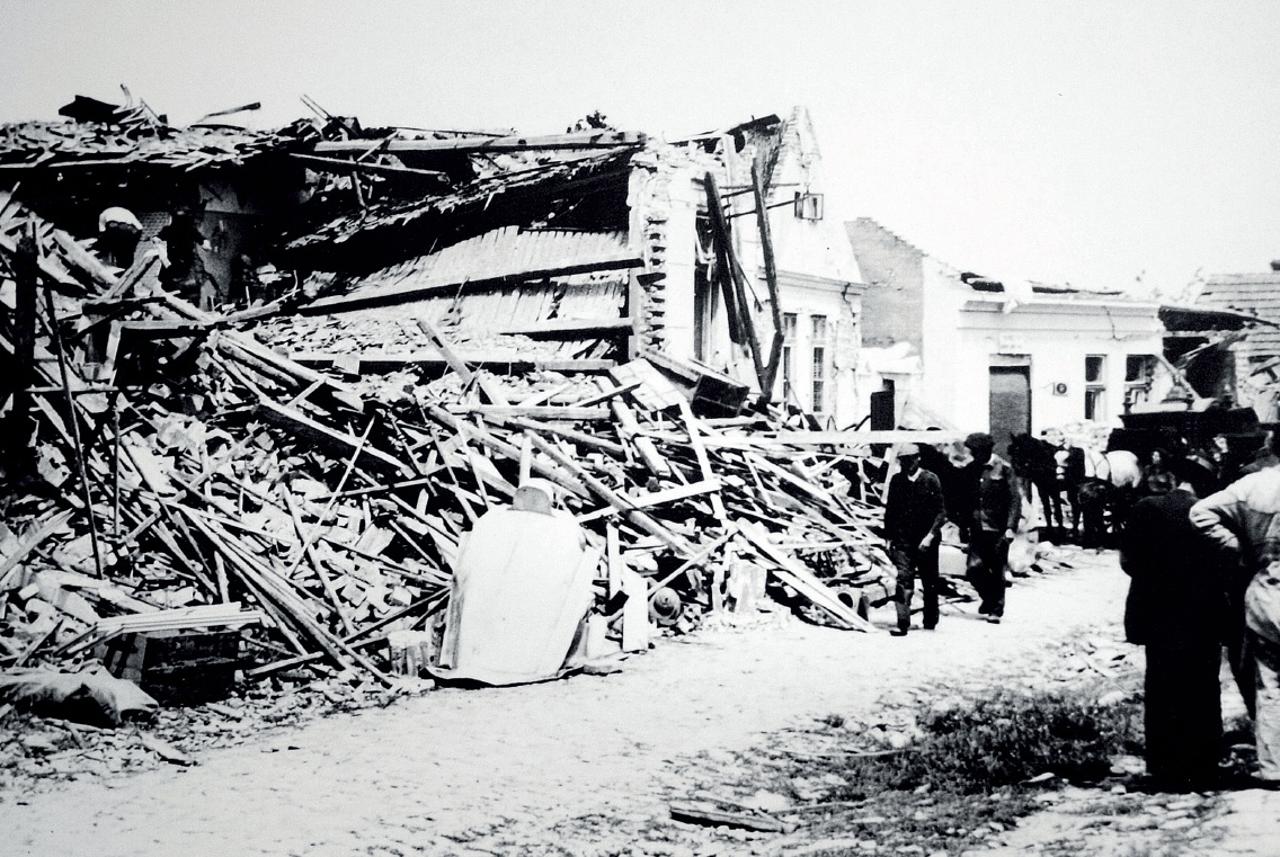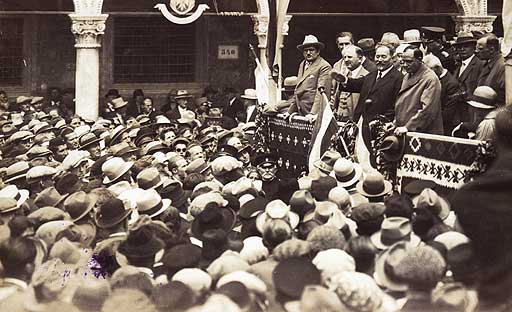|
─īepin
─īepin (; ; sr-Cyrl, ą¦ąĄą┐ąĖąĮ) is a village and a municipality in Osijek-Baranja County, Croatia. It is located in northeast Slavonia, 10 kilometers southwest of Osijek. ─īepin, with its 11,599 inhabitants at the 2011 census, is now included in Osijek built-up area. The majority of the population is Croats, Croat at 93.8%. Minorities include Serbs of Croatia, Serbs and Hungarians of Croatia, Hungarians. There is also an airport, used exclusively for sport and private flying purposes (Sport Airport ─īepin). History In the late 19th and early 20th century, ─īepin was part of the Virovitica County of the Kingdom of Croatia-Slavonia. Demographics According to the 2011 Census of Croatia, 2011 census, the Municipality of ─īepin had 11,599 inhabitants, making it the third largest municipality in Croatia and largest in Slavonia by population. The village of ─īepin itself, with 9,500 inhabitants, is the largest settlement in Croatia which doesn't have a town status (excluding Sesvete), ... [...More Info...] [...Related Items...] OR: [Wikipedia] [Google] [Baidu] |
Osijek-Baranja County
Osijek-Baranja County (, , ) is a Counties of Croatia, county in Croatia, located in northeastern Slavonia and Baranya (region), Baranja which is defined part of the Pannonian Plain. Its center is Osijek. Other towns include ─Éakovo, Na┼Īice, Valpovo, Beli┼Ī─će, and Beli Manastir. History Osijek-Baranja County was established in 1992, with border changes in 1997. Stifolder The ''Stifolder'' or ''Stiffoller Shvove'' are a Roman Catholic subgroup of the so-called Danube Swabians. Their ancestors arrived ca. 1717 - 1804 from the Hochstift Fulda and surroundings (Roman Catholic Diocese of Fulda), and settled in the Baranja area, such as in Jagodnjak, etc. They retained their own German dialect and culture, until the end of WW2. After WW2, the majority of Danube Swabians were expelled to Allied-occupied Germany and Allied-occupied Austria as a consequence of the Potsdam Agreement. Only a few people can speak the old Stiffolerisch Schvovish dialect. A salami is named after the peo ... [...More Info...] [...Related Items...] OR: [Wikipedia] [Google] [Baidu] |
Municipalities Of Croatia
Municipalities in Croatia (; plural: ''op─ćine'') are the second-lowest administrative unit of government in the country, and along with List of cities in Croatia, cities and towns (''grad'', plural: ''gradovi'') they form the second level of administrative subdisivion, after Counties of Croatia, counties. Each municipality consists of one or more settlements (''naselja'') , which are the third-level spatial units of Croatia. Though equal in powers and administrative bodies, municipalities and towns differ in that municipalities are usually more likely to consist of a collection of villages in rural or suburban areas, whereas towns are more likely to cover urbanised areas. Law of Croatia, Croatian law defines municipalities as local self-government units which are established, in an area where several inhabited settlements represent a natural, economic and social entity, related to one other by the common interests of the area's population. As of 2023, the 21 counties of Croatia ... [...More Info...] [...Related Items...] OR: [Wikipedia] [Google] [Baidu] |
Osijek
Osijek () is the fourth-largest city in Croatia, with a population of 96,848 in 2021. It is the largest city and the economic and cultural centre of the eastern Croatian region of Slavonia, as well as the administrative centre of Osijek-Baranja County. Osijek is on the right bank of the Drava River, upstream of its confluence with the Danube, at an elevation of . Name The name was given to the city due to its position on elevated ground, which prevented the city being flooded by the local swamp waters. Its name ''Osijek'' derives from the Croatian word ''oseka'' ' ebb tide'. Due to its history within the Habsburg monarchy and briefly in the Ottoman Empire, as well as the presence of German, Hungarian, and Serbian minorities throughout its history, Osijek has (or had) its names in other languages: Hungarian: ''Esz├®k'', German: , or , , and English: ''Esgek''. Its Roman name was ''Aelia Mursa'', ''Mursa'', and later ''Mursa Major'', which may be a form of the pre-existing na ... [...More Info...] [...Related Items...] OR: [Wikipedia] [Google] [Baidu] |
Vehicle Registration Plates Of Croatia
The standard license plate, licence plates in Croatia consist of a two-letter city code which is separated by the coat of arms of Croatia from three or four numbers and one or two letters. Regular plates The standard regular plate consists of three or four randomly assigned numbers, one or two randomly assigned letters, and the first two letters indicate the city, separated by the Croatian coat of arms, while the numbers and the last letters are separated by a dash (example; Zagreb, ZG 000-A, ZG 000-AA, ZG 0000-A or ZG 0000-AA). The letters Q, W, X and Y are not used in Croatian plates because they are not in Croatian alphabet. Since Croatia entered the European Union in 2013, there have been proposals to permanently change the design scheme (consisting of new letter font and ideas to replace the coat of arms with four red squares). However, in July 2016, it was determined to keep the original design and add the blue EU-issued sticker, applying the Vehicle registration plates of ... [...More Info...] [...Related Items...] OR: [Wikipedia] [Google] [Baidu] |
Svemir ─Éor─æi─ć
Svemir ─Éor─æi─ć (; born 16 May 1948) is a Yugoslav former footballer who played as a midfielder. Career After spending two seasons with Vojvodina, ─Éor─æi─ć was transferred to Partizan in 1968. He remained with the club for eight years, making 186 league appearances and scoring 32 goals. In 1976, ─Éor─æi─ć moved abroad to Switzerland and played for two seasons with Sion. He would also play for fellow Swiss clubs Lausanne and Monthey. Honours ;Partizan * Yugoslav First League The Yugoslav First League ( Bosnian: Prva savezna liga u fudbalu, sr-Cyrl-Latn, ą¤čĆą▓ą░ čüą░ą▓ąĄąĘąĮą░ ą╗ąĖą│ą░ čā čäčāą┤ą▒ą░ą╗čā, Prva savezna liga u fudbalu, , , , , ) was the premier football league in the Kingdom of Yugoslavia (1918ŌĆō1941) ...: 1975ŌĆō76 References External links * {{DEFAULTSORT:Dordic, Svemir 1948 births Living people Footballers from Osijek Serbs of Croatia Yugoslav men's footballers Men's association football midfielders FK Vojvodina players FK Partizan players ... [...More Info...] [...Related Items...] OR: [Wikipedia] [Google] [Baidu] |
Croatian Peasant Party
The Croatian Peasant Party (, HSS) is an agrarianism, agrarian List of political parties in Croatia, political party in Croatia founded on 22 December 1904 by Antun Radi─ć, Antun and Stjepan Radi─ć as Croatian Peoples' Peasant Party (HPSS). The Brothers Radi─ć believed that the realization of Croatian statehood was possible within Austria-Hungary, but that it had to be reformed as a Monarchy divided into Trialism in Austria-Hungary, three equal parts ŌĆō Austria, Hungary and Croatia. After the creation of Kingdom of Yugoslavia in 1918, the Party requested for the Croatian part of the Kingdom to be based on self-determination. This brought them great public support which culminated in 1920 Kingdom of Serbs, Croats and Slovenes Constitutional Assembly election, 1920 parliamentary election when HPSS won all 58 seats assigned to Croatia. In 1920, disgruntled with a bad position of Croats in the Kingdom, the party changed its name into Croatian Republican Peasant Party (HRSS) and sta ... [...More Info...] [...Related Items...] OR: [Wikipedia] [Google] [Baidu] |
2011 Census Of Croatia
Eleven or 11 may refer to: *11 (number) * One of the years 11 BC, AD 11, 1911, 2011 Literature * ''Eleven'' (novel), a 2006 novel by British author David Llewellyn *''Eleven'', a 1970 collection of short stories by Patricia Highsmith *''Eleven'', a 2004 children's novel in The Winnie Years by Lauren Myracle *''Eleven'', a 2008 children's novel by Patricia Reilly Giff *''Eleven'', a short story by Sandra Cisneros Music *Eleven (band), an American rock band * Eleven: A Music Company, an Australian record label *Up to eleven, an idiom from popular culture, coined in the movie ''This Is Spinal Tap'' Albums * ''11'' (The Smithereens album), 1989 * ''11'' (Ua album), 1996 * ''11'' (Bryan Adams album), 2008 * ''11'' (Sault album), 2022 * ''Eleven'' (Harry Connick, Jr. album), 1992 * ''Eleven'' (22-Pistepirkko album), 1998 * ''Eleven'' (Sugarcult album), 1999 * ''Eleven'' (B'z album), 2000 * ''Eleven'' (Reamonn album), 2010 * ''Eleven'' (Martina McBride album), 2011 * ''Eleven'' (Mr Fogg ... [...More Info...] [...Related Items...] OR: [Wikipedia] [Google] [Baidu] |
2023 Croatian National Minorities Councils And Representatives Elections
The 2023 Croatian national minorities councils and representatives elections () were held on 7 May in certain regional (counties) and local administrative units (municipalities and towns & cities). Background Elections were announced in Narodne novine following the decision of the Government of the Republic of Croatia. Each of 22 traditional national minority enumerated in the preamble of the Constitution of Croatia is entitled to elect local or regional council in administrative units in which legal conditions are met with many units electing multiple councils for different minorities. 14 minorities fulfilled conditions to organize councils elections and 19 to organize representative elections with many electing first or the second in different electoral units. The State Electoral Commission of the Republic of Croatia announced the election in mid March of 2023. The State Electoral Commission called upon the electorate and candidates to check if their status is appropriat ... [...More Info...] [...Related Items...] OR: [Wikipedia] [Google] [Baidu] |
Land Reform In Interwar Yugoslavia
The land reform in interwar Yugoslavia was a process of redistribution of agricultural land in the Kingdom of Serbs, Croats and Slovenes (renamed Yugoslavia in 1929) carried out in the interwar period. The reform's proclaimed social ideal was that the land belongs to those who work it. An unrealistically idyllic image of Serbian villages in the region of ┼Āumadija was touted as the model of national awareness and peasant liberty sought by the reform, which was aimed at dismantling remnants of serfdom and sharecropping in parts of the country, as well as at breaking up large agricultural estates. Approximately two thirds of the land expropriated and distributed by the land reform was located on the territory of the present-day Bosnia and Herzegovina. All parts of the country were subject to the reform, except the territory of the former Principality of Serbia (corresponding to the northern part of pre-World War I Serbia). A total of of land was redistributed, and more than 600, ... [...More Info...] [...Related Items...] OR: [Wikipedia] [Google] [Baidu] |



